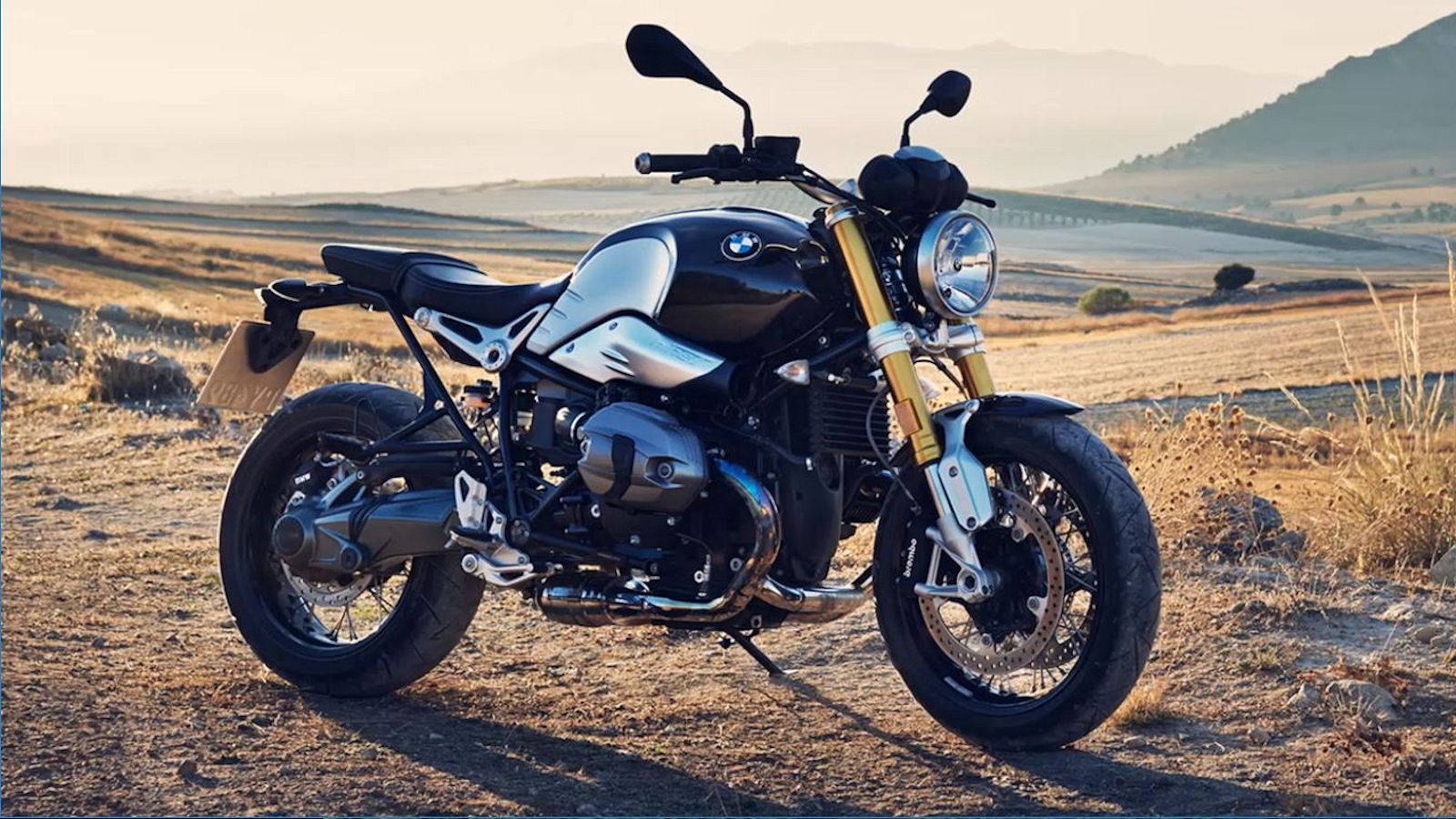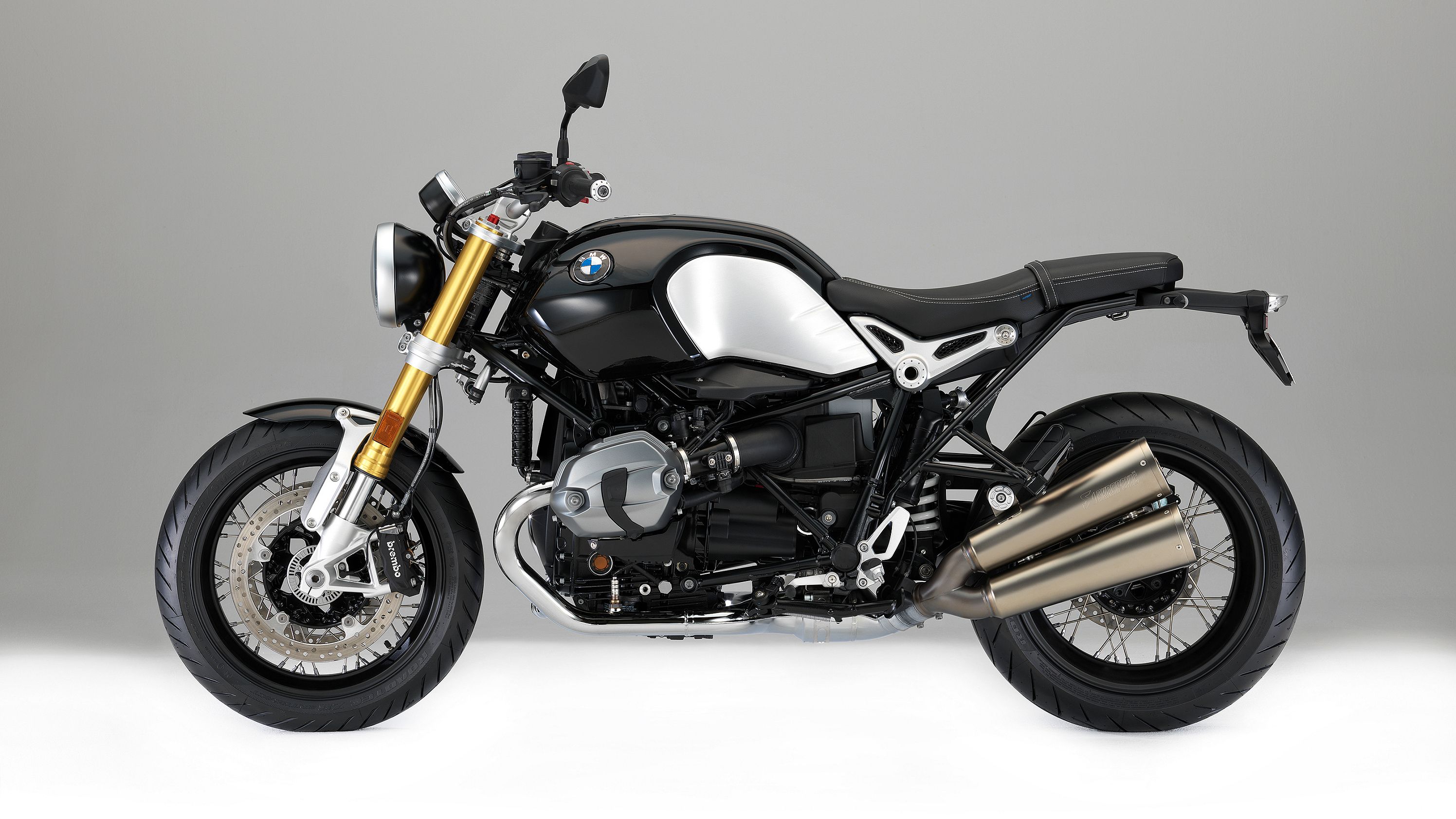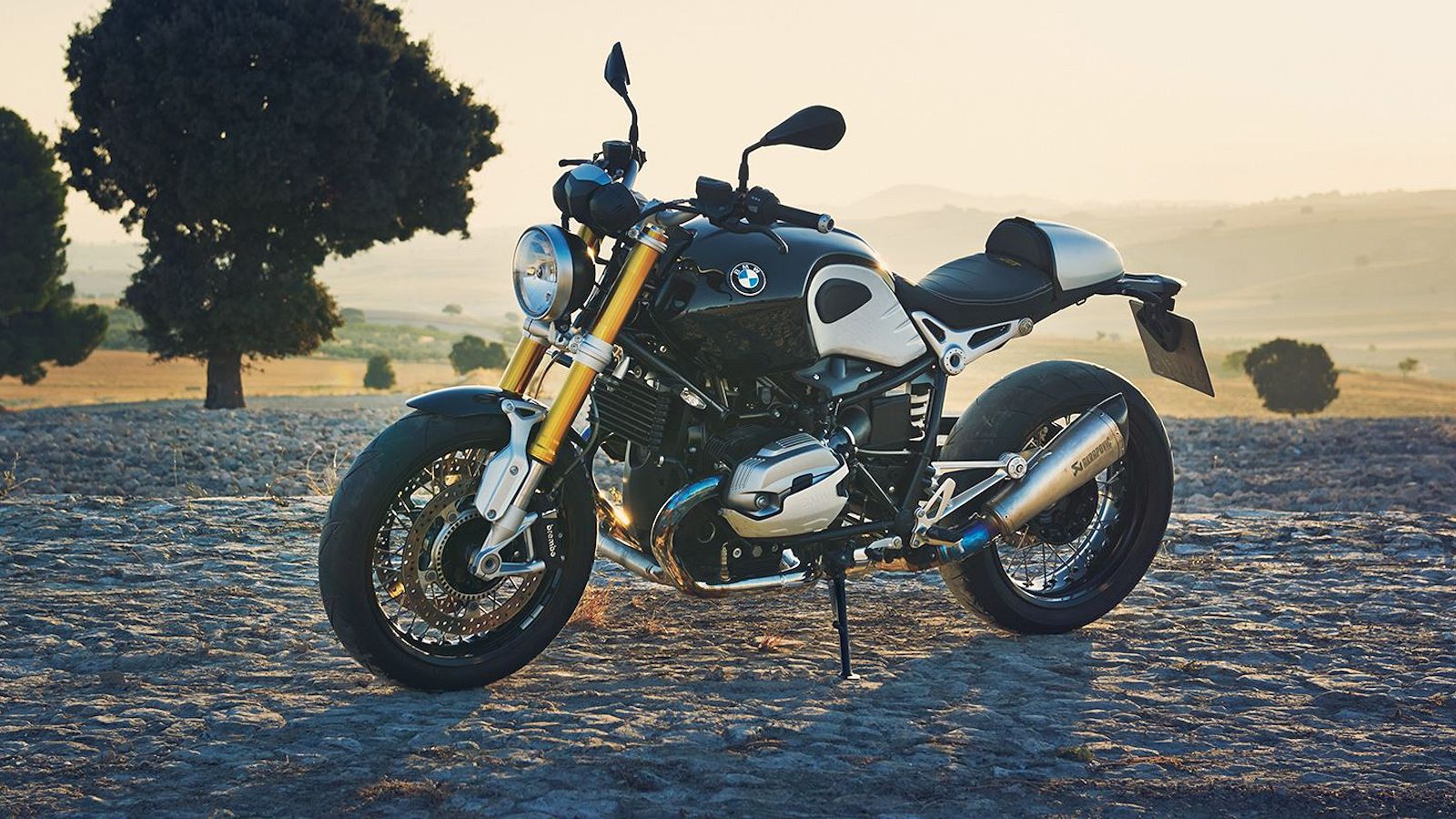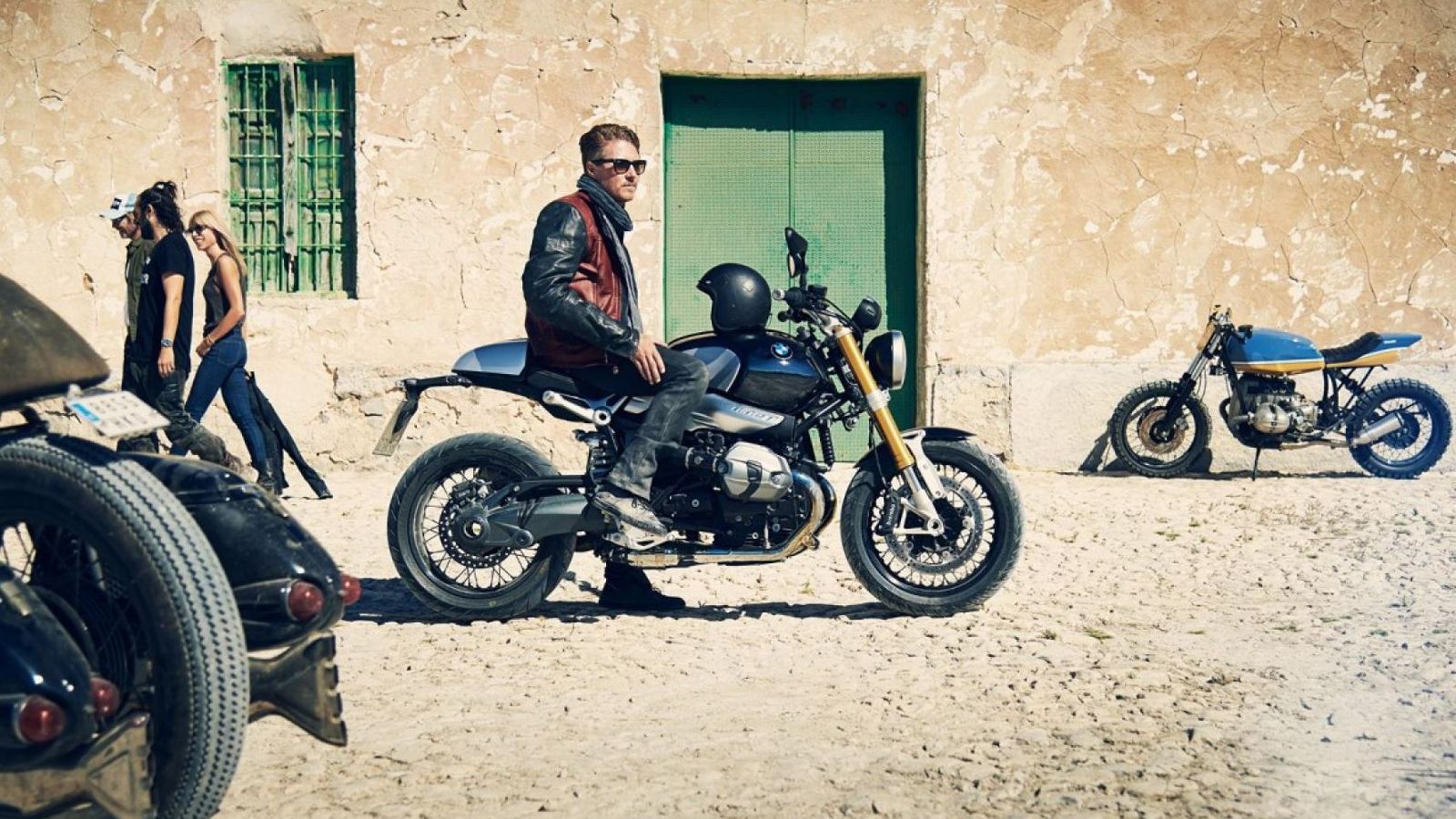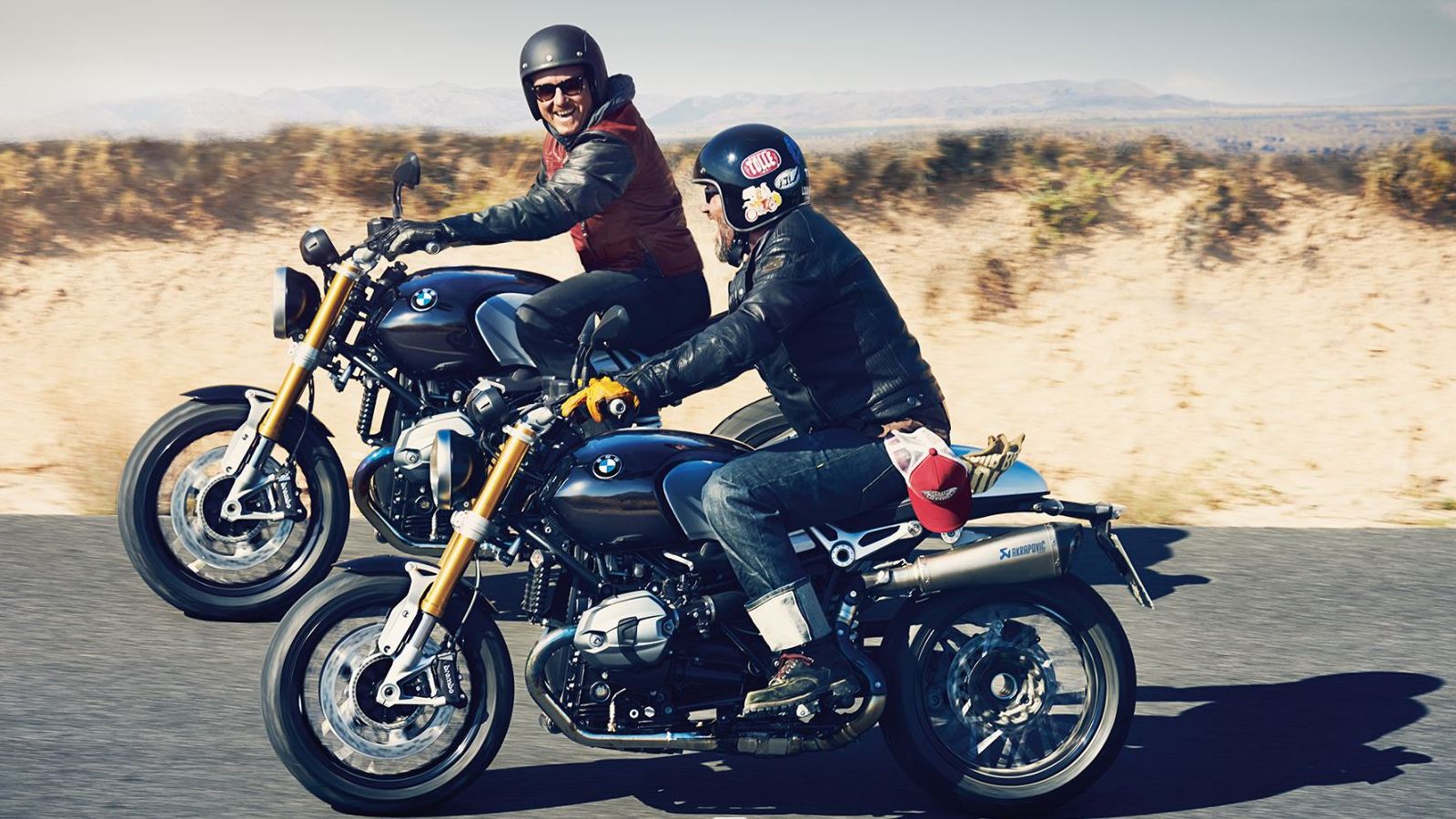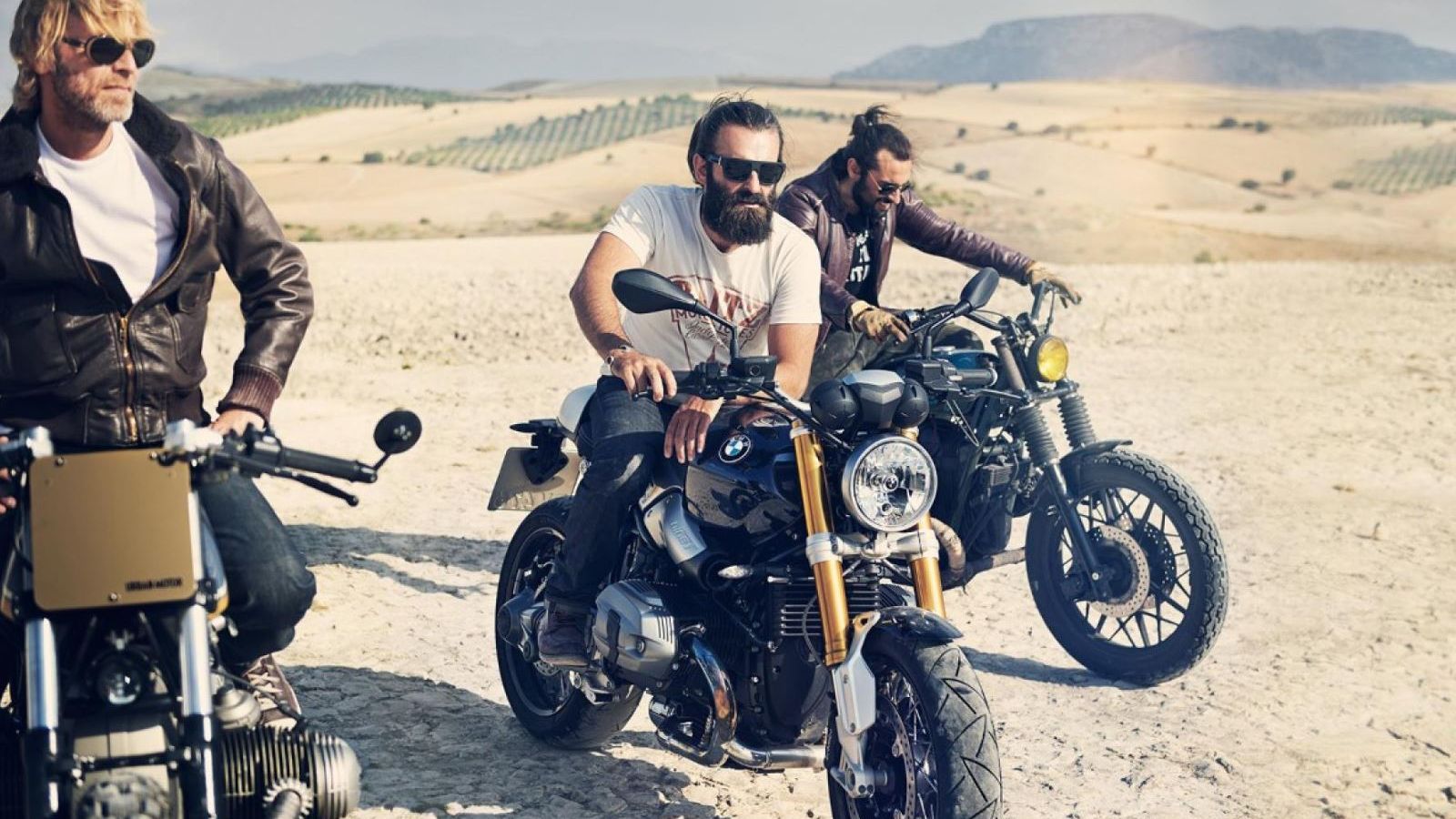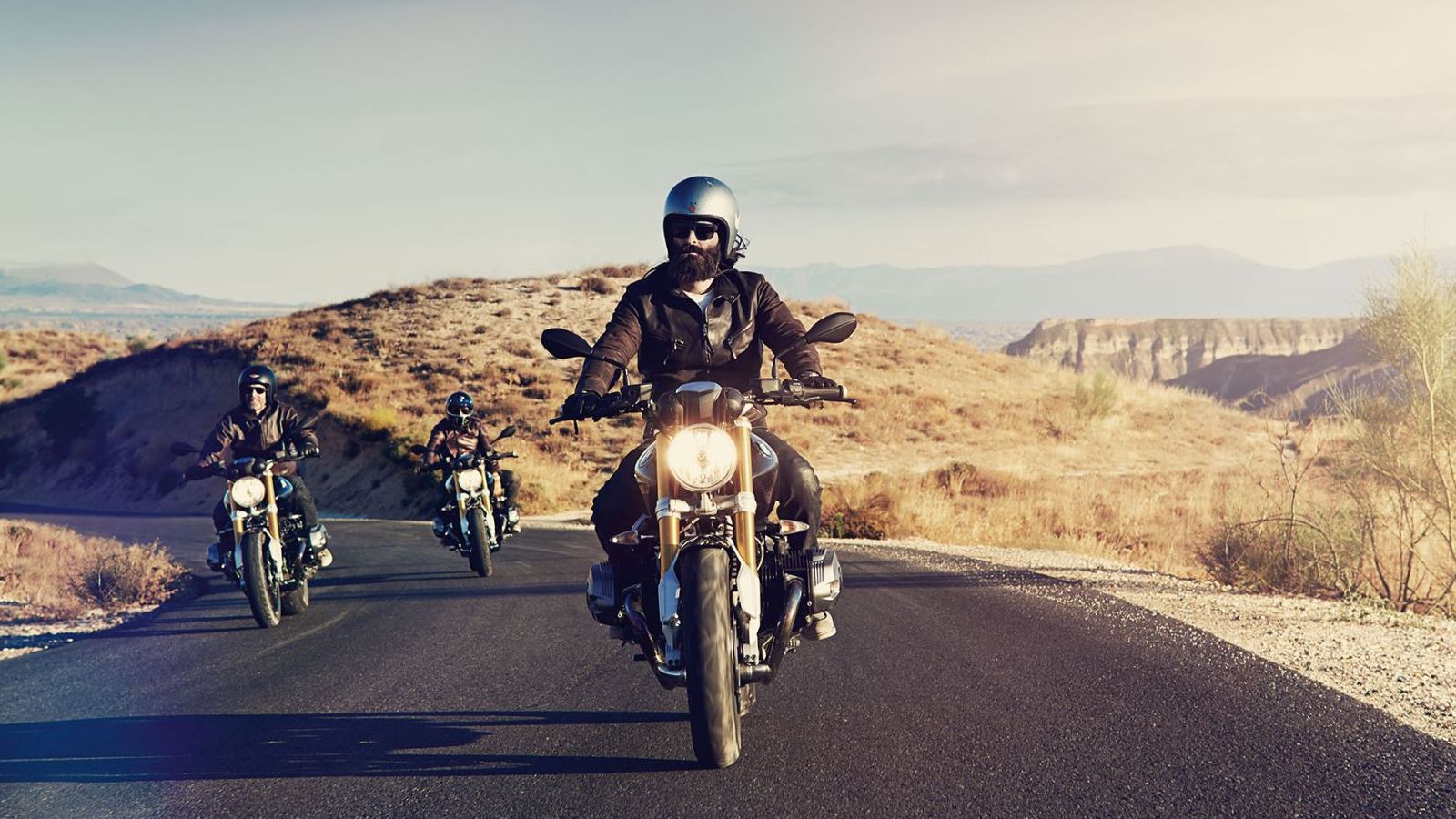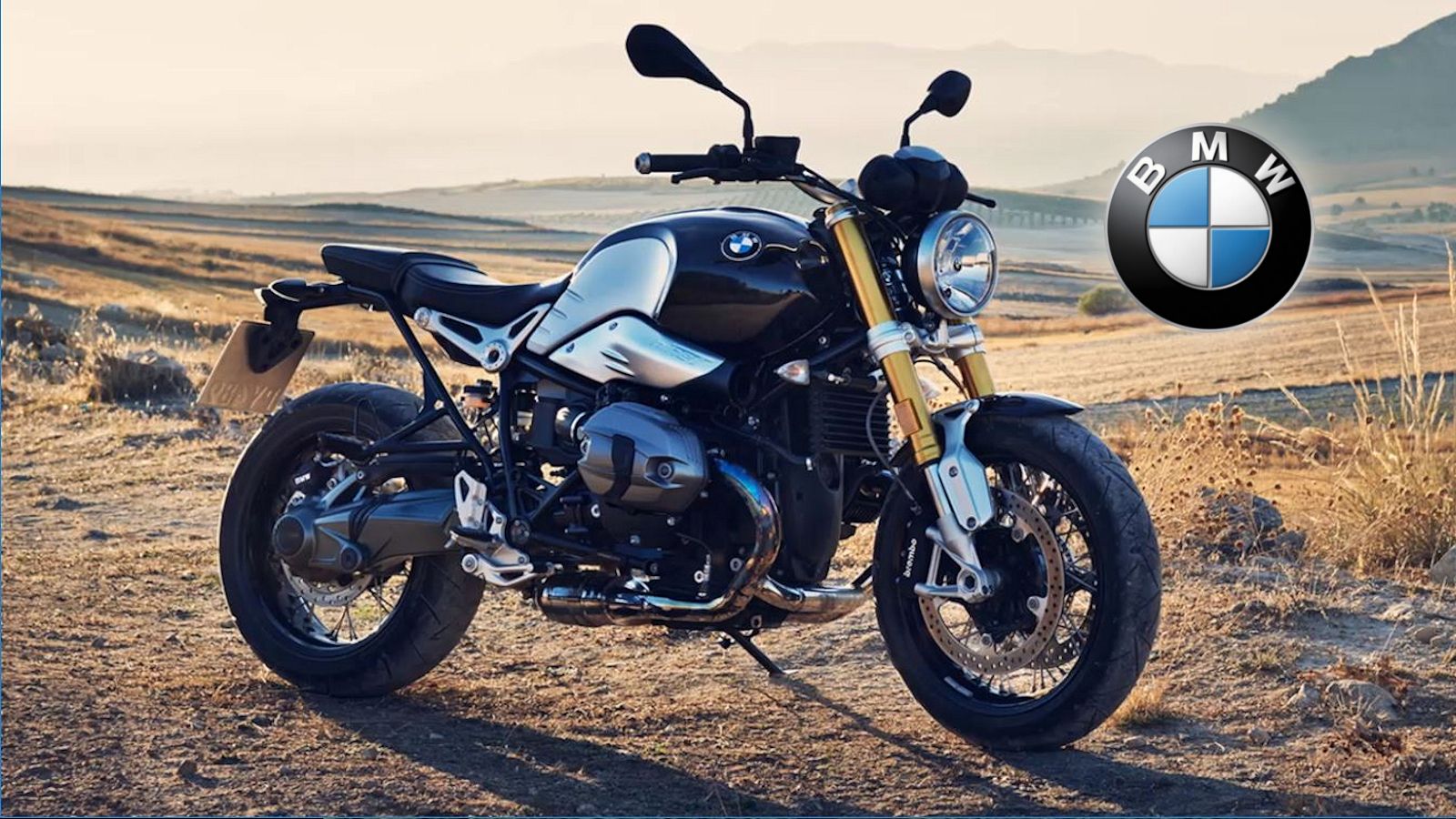Heritage sells, and BMW looks to take it to the bank with its R nineT model family that brings classic looks and a timeless engine configuration together. Outward appearances may draw on dated (read: classic) design elements, but performance from the boxer-twin powerplant puts the R nineT in a decidedly modern category that has launched an entire line of sub-models.
2017 - 2020 BMW R nineT
- Make: Array
- Model: 2017 - 2020 BMW R nineT
- Engine/Motor: Flat twin
- [do not use] Vehicle Model: Array
BMW R nineT Design
Beemer's sharp little roadster comes with the essentials, but little else to clutter up the looks or add unnecessary weight. Beefy, inverted front forks boost the visual weight, yet even that is tempered somewhat by the cut-down front fender and minimal cyclops headlight can.
Up top, an updated instrument cluster rocks buffed-up electronics with expanded on-board computer software for this latest iteration. Short-rise bars encourage a forward-leaning posture over the long, 4.8-gallon fuel tank with jockey-mount footpegs to complete the sporty rider's triangle, and why not; the standard roadster is arguably the predecessor of the contemporary standard/naked sportbike.
Indentations at the rear of the tank make for a narrow waist where it meets the seat, and they pull your knees inboard and out of the slipstream while leaving room to throw your English around if you have the stones for it. The seat is almost a bench, but it carries a minimal amount of rise at the back of the pilot's area, so it won't provide much butt-retention action for you.
Since the subframe area is so sparse, it leaves the R nineT with an all-up-front look that leaves the rear wheel nowhere to hide, at least on the right side as the left side surrenders some visibility to mufflers on the 2-into-1-into-2 exhaust system for yet another nod to trackside fashion, as it were.
My preferred types of racing to watch are the kinds that use a one-design format to tests the riders exclusively and removes the mechanics/machines as a factor, and instead tests the riders exclusively. So, I'm was happy to see the new BMW Motorrad BoxerCup that kicked off at the ADAC Classic in Sachsenring, Germany. It featured up to 30 modified but identical R nineT Racer models in an effort to revive some enthusiasm for the old-school boxer-racing class, and I, for one, definitely smell what Beemer's cooking over there.
BMW R nineT Chassis
The factory supports the R nineT with what it calls a “modular steel tubular space frame” that runs with a removable subframe section as part of the configurable seating feature. As with its modern naked-sport counterparts, the R nineT relies on the strength of the engine case to replace the downtube and cradle sections of the frame to keep things as light as possible. It seems like it paid off as the R nineT weighs in at only 485-pounds soaking wet.
Now, BMW is known for its, shall we say, non-mainstream suspension systems, and even though it sticks with common-enough inverted forks up front, the rear end is more typical of the brand. Beemer's Paralever system springs off the single-side, cast-aluminum swingarm with the ubiquitous spring-preload adjustment alongside a variable rebound-damping feature. A set of 17-inch cast-aluminum wheels come lined with a 120/70 tire up front and a 180/55 out back, and in case you're wondering what kind of performance you can expect from it, the race-tire “ZR” rating should tell you what you need to know.
In addition to the potential for great speeds, the factory blessed it with a 26.8-degree steering head and 4.2 inches of trail that promise relative stability with an eagerness in the corners, plus a steering damper to absorb some of the kickback at the bar. A pair of four-pot calipers bite dual, 320 mm front discs to provide the bulk of the stopping power with a twin-piston anchor and 265 mm disc out back. BMW's proprietary ABS represents the only safety equipment that comes with the stock package.
|
Frame: |
Four-part frame consisting of one front and three rear sections, load-bearing engine-gearbox unit, removable pillion frame for single rider use |
|
Front suspension/Travel: |
Upside-down telescopic fork, Ø 46 mm/4.7” (120 mm) |
|
Rear suspension/Travel: |
Cast aluminum single-sided swing arm with BMW Paralever; central spring strut, spring pre-load hydraulically adjustable (continuously variable) via handwheel, rebound damping adjustable/4.7” (120 mm) |
|
Castor: |
4.2” (107.9 mm) |
|
Steering head angle: |
26.8° |
|
Wheels: |
Wire spoke wheels |
|
Rim, front/rear: |
3.50 x 17"/5.50 x 17” |
|
Tire, front: |
120/70 ZR 17 |
|
Tire, rear: |
180/55 ZR 17 |
|
Brake, front: |
Dual floating disc brakes, 4-piston calipers, diameter 320 mm |
|
Brake, rear: |
Single disc brake, diameter 265 mm, dual-piston floating caliper |
|
ABS: |
BMW Motorrad ABS |
BMW R nineT Drivetrain
The boxer that adds so much to the overall panache in the R nineT runs with 101 mm bores and a 73 mm stroke for a total of 1,170 cc tucked away within the twin jugs. A DOHC setup actuates the four valves in each head, and though the engine relies mainly on air cooling to eliminate the waste heat, it gets some backup from an oil-cooling system that protects the engine's lifeblood and draws off even more BTUs.
The mill runs a counter-balancer to help mitigate some of the vibration to give your hands and butt a break from the pins-and-needles. Dual throttle bodies meter the fuel, but there's very little in the way of fandanglery as the only other electronic ride aid is Beemer's Automatic Stability Control that was taken out of options for 2020 and added as standard equipment.
The power develops with a fairly linear progression to the tune of 110 horsepower at 7,750 rpm with 86 pounds o' grunt that maxes out at six grand and turns in speeds over 125 mph after the power filters through the six-speed tranny that rocks helical-cut gears for quiet power transfer. Fuel efficiency is fairly typical at 44 mpg, so it could certainly make a decent commuter, and it meets EU-4 emissions so you can use it anywhere in the U.S.
|
Engine: |
Air/oil-cooled 4-stroke flat twin engine with balance shaft, four valves per cylinder, double overhead camshaft, wet sump lubrication |
|
Bore x stroke: |
101 mm x 73 mm |
|
Displacement: |
1,170 cc |
|
Rated output: |
110 hp (81 kW) @ 7,750 rpm |
|
Max. torque: |
86 lb-ft (116 Nm) @ 6,000 rpm |
|
Compression ratio: |
12.0:1 |
|
Mixture control / engine management: |
Electronic fuel injection |
|
Emission control: |
Closed-loop 3-way catalytic converter, exhaust emission standards EU-4 |
|
Clutch: |
Single dry plate clutch, hydraulically operated |
|
Gearbox: |
Constant-mesh 6-speed gearbox with helical cut gears |
|
Drive: |
Shaft drive 2.91:1 |
BMW R nineT Pricing
The R nineT base model rolls for $15,495, but you'll have to skin that checkbook if you want some of the two-tone colorway or one of the Option 719 choices.
|
Standard Features: |
ABS, Modular Frame Concept, Upside-Down Telescopic Fork, Disc Brakes, Multifunction Display with On-Board Computer, Smoked Turn Signal Lenses, LED Rear Light, Removable Rear Frame for Customization, Adjustable Rear Shock Rebound Damping and Spring Preload, Spoked Wheels, Speedometer and Tachometer, Painted Aluminum Fuel Tank, Chrome Exhaust, One Piece Bench Seat, Rear Axle Housing with 3 Mounting Points for Customization, Steering Stabilizer |
|
Colors: |
|
|
└ 2018: |
Black Storm Metallic, Opt. 719 Black Storm Metallic / Vintage, Opt. 719 Blue Planet Metallic / Aluminum |
|
└ 2019: |
Black Storm Metallic, Opt. 719 Black Storm Metallic / Vintage, Opt. 719 Mars Red Metallic Matt / Cosmic Blue Metallic Matt, Opt. 719 Pollux Metallic / Aluminum |
|
└ 2020: |
Black Storm Metallic, Black Storm Metallic / Vintage, Opt 719 Pollux Metallic / Aluminum, Opt 719 Mars Red Metallic Matte / Cosmic Blue Metallic Matte |
|
Price: |
$15,495 |
BMW R nineT Competitors
Ya know, the first bike I thought of when I saw the R nineT was Triumph's new Thruxton RS, so that's what I'm rolling with for the head-to-head.
Triumph Thruxton RS
The Trumpet's lines and sheet metal is fairly comparable, and hits all the same high points from the long, knee-relief fuel tank back to the tail cover though the rear-end comes off a bit more cluttered compared to the Beemer due to the fender style.
Fully adjustable suspension components support the Thruxton for an edge, and as I'm always fond of pointing out, the Thruxton's throttle bodies are modeled to look like those old mechanical-slide carbs, and that's a historical touch that really floats my boat. Triumph sticks to a classic downtube/cradle frame, and I hardly notice the radiator that mounts right up front.
Looks come down to taste, but the engines are much easier to qualify. Trumpet is found to be wanting with its classic parallel-twin mill that churns out 103 horsepower and 83 pound-feet of torque against the Beemer's 110/86. No, it's not a big difference, but it's a difference all the same. Point to BMW.
Both marques chuck on some advanced electronics such as traction control and riding modes to more or less break even on the tech front. Triumph lets loose of its Thruxton RS for $16,200 so it comes off looking kinda' proud against the $15,495 sticker on the R nineT.
Read our full review of the Triumph Thruxton RS.
He Said
“Personally, I think I prefer the Triumph in this particular instance, but I can't say how much the aesthetics alone are affecting that assertion. One thing is for sure, the Thruxton is liable to appeal to the same sort of buyer, and both bring something to the table. Since both support some pretty solid safety electronics and rock proven engines, the choice literally narrows down to price and design taste.”
She Said
My wife and fellow motorcycle writer, Allyn Hinton, says, “It's a little deceiving to call this the base model because it's really the top of the range for the R nineT family. It's surprisingly agile; I say “surprisingly” because it looks like it'll be a bit hefty, but once it gets rolling, it's nice to handle.”
BMW R nineT Specifications
|
Engine & Drivetrain: |
|
|
Engine: |
Air/oil-cooled 4-stroke flat twin engine with balance shaft, four valves per cylinder, double overhead camshaft, wet sump lubrication |
|
Bore x stroke: |
101 mm x 73 mm |
|
Displacement: |
1,170 cc |
|
Rated output: |
110 hp (81 kW) @ 7,750 rpm |
|
Max. torque: |
86 lb-ft (116 Nm) @ 6,000 rpm |
|
Compression ratio: |
12.0:1 |
|
Mixture control / engine management: |
Electronic fuel injection |
|
Emission control: |
Closed-loop 3-way catalytic converter, exhaust emission standards EU-4 |
|
Clutch: |
Single dry plate clutch, hydraulically operated |
|
Gearbox: |
Constant-mesh 6-speed gearbox with helical cut gears |
|
Drive: |
Shaft drive 2.91:1 |
|
Chassis: |
|
|
Frame: |
Four-part frame consisting of one front and three rear sections, load-bearing engine-gearbox unit, removable pillion frame for single rider use |
|
Front suspension/Travel: |
Upside-down telescopic fork, Ø 46 mm/4.7” (120 mm) |
|
Rear suspension/Travel: |
Cast aluminum single-sided swing arm with BMW Paralever; central spring strut, spring pre-load hydraulically adjustable (continuously variable) via handwheel, rebound damping adjustable/4.7” (120 mm) |
|
Castor: |
4.2” (107.9 mm) |
|
Steering head angle: |
26.8° |
|
Wheels: |
Wire spoke wheels |
|
Rim, front/rear: |
3.50 x 17"/5.50 x 17” |
|
Tire, front: |
120/70 ZR 17 |
|
Tire, rear: |
180/55 ZR 17 |
|
Brake, front: |
Dual floating disc brakes, 4-piston calipers, diameter 320 mm |
|
Brake, rear: |
Single disc brake, diameter 265 mm, dual-piston floating caliper |
|
ABS: |
BMW Motorrad ABS |
|
Dimensions & Capacities: |
|
|
Length: |
83.1” (2,110 mm) |
|
Width (incl. Mirrors): |
35.5” (900 mm) |
|
Height (incl. Mirrors): |
48.8” (1,240 mm) |
|
Wheelbase: |
58.5” (1,487 mm) |
|
Seat height, unladen weight: |
Standard Seat: 31.7", Custom Front Seat: 31.3" |
|
Inner leg curve, unladen weight: |
Standard Seat: 70.3", Custom Front Seat: 69.9" |
|
Unladen weight, road ready, fully fueled: |
489 lbs (222 kg) |
|
Permitted total weight: |
948 lbs (430 kg) |
|
Payload (with standard equipment): |
459 lbs (208 kg) |
|
Usable tank volume: |
4.8 gal (18 l) |
|
Reserve: |
Approx. 0.8 gal (3 L) |
|
Maximum speed: |
Over 125 mph |
|
Fuel consumption: |
44 mpg (WMTC) |
|
Fuel type: |
Premium Unleaded |
|
Electricals: |
|
|
Alternator: |
Three-phase 720 W alternator |
|
Battery: |
12 V/14 Ah, maintenance-free |
|
Details: |
|
|
Standard Features: |
ABS, Automatic Stability Control , Adjustable Rear Suspension Spring Preload, Adjustable Rear Shock Absorber Rebound, Aluminum Fuel Tank, Chrome Exhaust, Disc Brakes, LED Tail Light, Modular Frame Concept, Multifunction Display, On-Board Computer, Power Socket, Smoked Grey Turn Signal Lenses, Speedometer, Spoked Wheels, Steering Damper, Tachometer, Two Section Dual Seat, Upside-Down Forks with Adjustable, Compression/Rebound Damping |
|
Colors: |
|
|
2018: |
Black Storm Metallic, Opt. 719 Black Storm Metallic / Vintage, Opt. 719 Blue Planet Metallic / Aluminum |
|
2019: |
Black Storm Metallic, Opt. 719 Black Storm Metallic / Vintage, Opt. 719 Mars Red Metallic Matt / Cosmic Blue Metallic Matt, Opt. 719 Pollux Metallic / Aluminum |
|
Price: |
$15,495 |
Further Reading
BMW Motorrad
Read more BMW Motorrad news.

